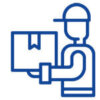
Michael Porters Five Forces theory has altered how we look at companies’ profitability within an industry. For this reason, this theory is one of the essential methodologies within strategy literature. This is one of the most frugal and most straightforward models to use. In this post, we look at Porters Five Forces in depth.
Porter´s Five Forces - FAQ
Michael Porters Five Forces is a competitive position analysis theory. It was developed in 1979 as a framework for assessing and evaluating a business organization’s competitive strength and position in an industry. Each of the five elements in this model determines a market’s attractiveness and competitive strength.
Tip: If you are done with your academic work, we can help you with dissertation printing!
The first thing you need to do before analyzing Porters Five Forces is to understand each of the elements. Once you have acquired this information, you need to understand the dynamics and structure of the market in which your business is operating. Afterward, consider each element and how it applies in your industry. With that, you can develop appropriate responses and plans to address the competition in an industry.
The five forces are essential because they can help a company understand how its market works. This knowledge will also help the company adjust its business strategy to use its resources better and generate more profit for its investors.
Michale Eugene Porter established porters Five Forces. Porter is a professor at the Business School of Harvard University. He wrote about this theory in a book called Competitive Strategy: Techniques for Analyzing Industries and Competitors. The book was published in 1980.
This theory features the following five elements;
- Competition in the industry
- Potential for new entrants into the industry
- Power of suppliers
- Power of customers
- Threats of substitute products
Porter´s Five Forces: Definition
Porters five forces is a model used to identify and analyze the five competitive forces that shape each industry. The model also helps determine the weaknesses and strengths of an industry. This model is typically used to identify the structure of an industry and develop a corporate strategy. Note that Porters Five Forces can be applied to any segment of the economy. It helps practitioners understand the level of competition in the industry and ensure that a company has long-term profitability.
How Porter´s Five Forces work
This business analysis model helps to explain why different industries can sustain various profitability levels. It gets its name from its publisher, Michael E. Porter. To understand how the five forces work, you first need to know what they are. Porters five forces are;

Competition in the industry
This is the first of the five forces. It refers to the number of competitors and the ability they have to undercut an organization. A company’s power can be undermined by the number of competitors and the equivalent products and services that they offer. More often than not, suppliers and buyers look for the competitor in hopes of getting better deals and low prices. Therefore, when competitive rivalry is low, a company has a greater power to sell products and services at higher prices. The company also can set higher terms of deals to get more sales and profits.

Potential on new entrants into the industry
Here, a company’s power is influenced by the forces of new entrants into its industry. Established companies are typically weakened when the amount of money and time it takes to get into their market is low. This means that more companies can get established hence increasing the competition levels. Therefore, an industry with substantial entry barriers is very advantageous to existing companies. This is because they can negotiate better terms and charge higher prices. They can do this without worrying about competitors cropping up.

Power of suppliers
The third of the five forces deals with how easily supplies can influence the cost of inputs. A company’s power is affected by the number of suppliers for its primary inputs, the inputs’ uniqueness, and how much it would take for a company to switch suppliers. If an industry with fewer suppliers, the higher its dependence on the supplier. This gives the suppliers the right to drive up the cost of inputs. On the other hand, an industry with many suppliers and low switching costs between suppliers means that companies can purchase inputs at low prices. This means that they get to increase their profits.
Powers of customer
This refers to the customers’ ability to drive the prices of products and services lower. This force is affected by the number of customers a company has and the cost the company would have to incur to get new customers or market its products. A smaller and more powerful customer base has more power to negotiate for lower prices and better deals than its counterparts. This means that a company with several smaller and more independent customers have more freedom to increase costs and profitability.
Threats of substitute products
Finally, substitute goods and services that can take the place of a company’s products pose a significant threat to a company. This means that companies that produce products and services with no close substitutes have more power to hike prices and alter favorable terms. On the other hand, companies whose products have close substitutes have no option but to offer low prices because doing the contrary would push clients to purchase their counterparts.
Companies need to understand Porters Five Forces so that they can apply it to their industries. Doing this can help them adjust their business strategies so that they can use their resources better. This will help generate higher earnings, especially for its investors. Arguably, this theory features a sixth force made up of several elements like regulation, taxation, and trade policies.
Porter´s Five Forces: Do’s and Don’ts
The Do’s and Don´ts of Porters Five Forces are;

- You can use this model where there are at least three competitors in a market
- It would help if you considered the impact that the government and its regulations have on an existing industry.
- You also have to consider the lifecycle stage of the industry. The earlier stages are usually more turbulent.
- It would be wise if you considered the dynamic elements of the industry in question.

- Never use the porters five forces theory for an individual firm. Note that it is designed to be used on an industry with several companies.
In a Nutshell
Porters Five Forces theory is a framework used to analyze the competitive environment of a company. This theory suggests that the number of competitive rivals can influence the profitability of a company. A company’s profitability can also be impacted by how easily new companies than enter the industry, suppliers, and customers’ roles and power. Porters Five Forces analysis also suggests that the availability or lack of substitute products can influence the profit a company makes. Porters Five Forces theory is applicable in industry situations and not for individual firms. It can be used to help give a company a competitive edge in the market.
